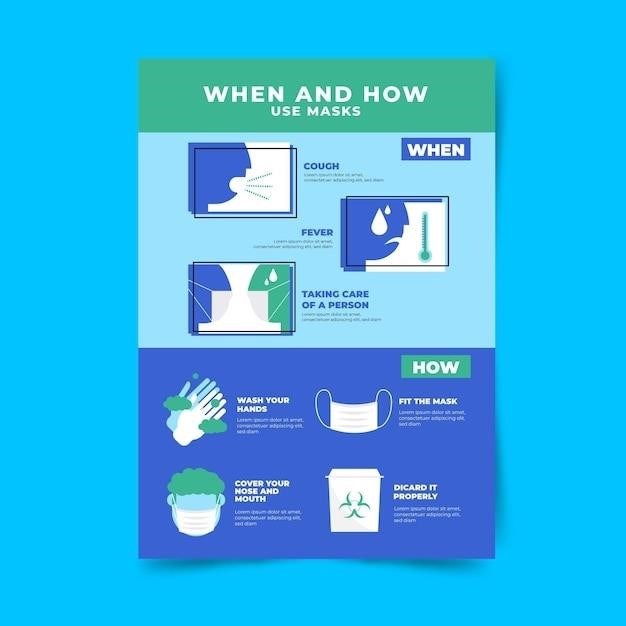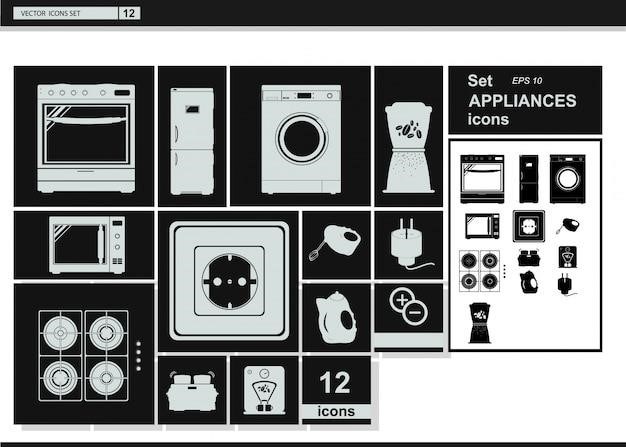
GE Profile Washer/Dryer Combo Manual⁚ A Comprehensive Guide
This manual provides a complete guide to operating and maintaining your GE Profile washer/dryer combo․ Learn about features, troubleshooting, and care for optimal performance and longevity․
Congratulations on your purchase of a GE Profile washer/dryer combo unit! This innovative appliance combines the convenience of washing and drying in a single, space-saving design․ Before you begin, familiarize yourself with the key features and functionalities to maximize its performance and efficiency․ This unit offers advanced technology, including intelligent sensors that automatically adjust the wash cycle based on the load size and fabric type․ You’ll find that this translates to energy savings and superior cleaning results․ The sleek design complements any modern laundry space and offers a range of customizable options to cater to your specific laundry needs․ Take a moment to locate the power cord and ensure it’s properly plugged into a grounded outlet․ Familiarize yourself with the control panel, which houses all the controls for selecting wash cycles, temperatures, and additional options․ This manual will guide you through each step of the process․ From loading laundry to selecting the appropriate cycle, we’ll cover all aspects of using your new appliance․ Remember to always refer to this manual for any questions or concerns․ Proper usage and maintenance will ensure years of reliable service․
II․ Understanding the Control Panel
The control panel of your GE Profile washer/dryer combo is your command center for all laundry operations․ Its intuitive design makes selecting wash cycles and options easy and efficient․ The large, bright display clearly shows the selected cycle, remaining time, and any error codes․ The buttons are logically arranged, with clearly labeled icons for easy identification․ You’ll find buttons for selecting wash cycles, adjusting water temperature, and choosing additional options such as extra rinse or wrinkle control․ Many models feature a dedicated button for delicate items, ensuring gentle care for your most sensitive garments․ Navigation is straightforward, allowing you to customize your wash settings to suit the specific needs of each load․ Understanding the symbols and icons on the control panel will greatly assist in efficient operation․ Refer to the detailed descriptions of each button and function later in this manual for a complete understanding of the capabilities of your control panel․ Mastering the control panel unlocks the full potential of your GE Profile washer/dryer combo, enabling you to achieve consistently superior laundry results․ Remember that the exact layout and features may vary slightly depending on your model; however, the overall operation remains consistent․
A․ Button Functions and Indicators
Your GE Profile washer/dryer combo’s control panel features a variety of buttons and indicator lights; Each button corresponds to a specific function, such as selecting a wash cycle, adjusting the water temperature, or adding extra rinse cycles․ The indicator lights provide visual feedback, showing the status of the machine during operation․ For example, a light might indicate that the machine is filling with water, washing, rinsing, spinning, or drying․ Some lights might flash to indicate an error condition, prompting you to consult the troubleshooting section of this manual․ Pay close attention to the symbols and icons displayed on each button․ These symbols provide a quick and easy way to understand the function of each button․ A comprehensive legend detailing each button’s function and the meaning of the indicator lights is provided in the appendix of this manual․ Familiarize yourself with these symbols and their meanings to ensure the efficient and effective use of your appliance․ Understanding these functions and indicators will allow for more precise control over the washing and drying process, optimizing results for various fabrics and soil levels․ Properly interpreting these visual cues is crucial for successful laundry operation․
B․ Cycle Selection and Options
Your GE Profile washer/dryer combo offers a variety of wash cycles designed to handle different fabrics and soil levels․ Selecting the appropriate cycle is crucial for optimal cleaning and fabric care․ Options include delicate cycles for lingerie and other sensitive items, permanent press for wrinkle-resistant fabrics, and heavy-duty cycles for heavily soiled clothes․ The unit also likely offers a quick wash option for lightly soiled items, saving time and energy․ Beyond cycle selection, additional options might include adjusting the water temperature (hot, warm, or cold), selecting extra rinse cycles for thorough cleaning, and choosing spin speed settings to control the level of water extraction before the drying cycle begins․ Some models may include steam cleaning options for enhanced stain removal and wrinkle reduction․ Carefully review the descriptions of each cycle and option provided in this manual․ This will help you understand the best settings for different types of laundry and desired cleaning results․ Incorrect cycle selection could damage your clothes or leave them inadequately cleaned․ Always refer to the fabric care labels on your garments for specific washing instructions․ Proper cycle selection and option utilization will contribute to the extended lifespan of your appliance and your clothing․
III․ Loading and Preparing Clothes
Before starting a wash cycle, proper preparation of your laundry is essential for optimal cleaning and to prevent damage to your clothes and the appliance․ Begin by sorting your clothes into appropriate categories based on color, fabric type, and soil level․ Separate whites from colors to avoid color transfer․ Treat heavily soiled items or stubborn stains with a pre-treatment solution before placing them in the washer․ Check pockets thoroughly to remove any items that could damage the machine or your clothes during the wash cycle․ Pay close attention to fabric care labels on your garments; they provide guidance on appropriate washing temperatures and cycles․ Once sorted, loading the washer correctly is vital for efficient cleaning․ Avoid overloading the machine, as this can hinder the washing action and reduce cleaning effectiveness․ Distribute items evenly within the drum, ensuring that no items are bunched together or wrapped around the agitator (if applicable)․ Overloading can also cause increased wear and tear on your machine’s components․ Following these loading and preparation steps will contribute to optimal cleaning results, protect your clothing, and ensure the longevity of your GE Profile washer/dryer combo․
A․ Sorting Laundry for Optimal Cleaning
Effective laundry sorting is crucial for achieving optimal cleaning results and preserving the quality of your clothes․ Begin by separating items based on color⁚ whites, lights, and darks should be washed separately to prevent color bleeding․ New, brightly colored garments should be washed individually for the first few washes to ensure they don’t shed dye onto other clothes․ Next, consider fabric type․ Delicate fabrics like silk, lace, and wool require gentle washing cycles and may need to be hand-washed or placed in mesh laundry bags․ Heavier fabrics like denim or towels can withstand more robust cycles․ Pay close attention to garment care labels for specific instructions․ Separate items by soil level․ Heavily soiled items, such as work clothes or athletic wear, should be washed separately from lightly soiled items to ensure thorough cleaning․ Consider pre-treating heavily soiled areas with a stain remover before washing․ Finally, consider separating items by size․ Mixing large and small items can lead to uneven cleaning and potential damage to delicate garments․ By following these sorting guidelines, you’ll maximize cleaning efficacy and extend the life of your clothing․
B․ Proper Loading Techniques for Best Results
Achieving optimal cleaning and drying performance from your GE Profile washer/dryer combo hinges on proper loading techniques․ Avoid overloading the machine; overcrowding restricts water and detergent circulation, leading to inefficient cleaning and potential damage to fabrics․ Consult your machine’s capacity guidelines for optimal load sizes․ Distribute items evenly within the drum to ensure balanced tumbling and thorough cleaning․ Avoid bunching clothes together, as this can hinder water penetration and reduce the effectiveness of the wash cycle․ For best results, loosen tightly packed items before placing them in the machine․ Before starting a cycle, check for any loose objects in pockets, as these can damage the drum or your clothing․ Items like coins, keys, or small toys should be removed before loading․ Large or bulky items should be added carefully to prevent snagging or tangling․ If washing bedding, ensure it’s not tightly wadded, but rather unfolded evenly to allow free movement and thorough cleaning․ Following these loading tips will enhance cleaning efficiency, extend the lifespan of your machine, and improve the overall quality of your laundry․
IV․ Common Wash Cycles Explained
Your GE Profile washer/dryer combo offers a variety of wash cycles designed for different fabric types and soil levels․ Understanding these cycles is key to achieving optimal laundry results․ The “Normal” cycle is a versatile option suitable for everyday laundry, balancing cleaning power and gentleness․ The “Delicates” cycle uses a gentler wash action and lower spin speed, ideal for delicate fabrics like silk and lace․ For heavily soiled items, the “Heavy Duty” cycle provides a more powerful wash with extended wash and rinse times․ The “Quick Wash” cycle is perfect for lightly soiled items when time is limited, offering a shorter wash and spin cycle․ A “Permanent Press” cycle helps reduce wrinkles in wrinkle-resistant fabrics, using a slower spin speed․ Many models include specialized cycles like “Bulky Items” for larger loads like blankets or comforters․ “Sanitize” cycles use higher water temperatures to help eliminate bacteria and germs․ Always refer to the detailed cycle descriptions in your machine’s user manual for specific recommendations on water temperature, spin speed, and drying options․ Properly selecting wash cycles will ensure your clothes are cleaned effectively and gently, prolonging their lifespan and maintaining their quality․
A․ Detailed Descriptions of Each Cycle

To fully utilize your GE Profile washer/dryer combo, understanding the nuances of each wash cycle is crucial․ The Normal cycle uses a standard wash action and water temperature, suitable for most everyday laundry․ Delicates, as the name implies, employs a gentler wash action and lower spin speed, protecting delicate fabrics from damage․ Heavy Duty provides a more vigorous wash and longer cycle times, perfect for removing stubborn stains from heavily soiled items․ The Quick Wash cycle offers a shorter, faster wash for lightly soiled clothes, saving time and energy․ Permanent Press uses a modified spin cycle to minimize wrinkles in wrinkle-resistant fabrics, ensuring they look their best․ The Bulky Items cycle (if available) accommodates larger items like blankets and comforters without overloading the machine․ Sanitize cycles utilize higher water temperatures to eliminate bacteria and germs, enhancing hygiene․ Specific settings like water temperature and spin speed may be adjustable for certain cycles, allowing for customized cleaning․ Consult your user manual for precise details on each cycle’s parameters, including recommended water temperature, soil level selection, and drying options․ This ensures you choose the optimal cycle for every laundry load․
B․ Choosing the Right Cycle for Different Fabrics
Selecting the appropriate wash cycle is key to preserving the quality and longevity of your garments․ For delicate fabrics like silk, lace, or wool, always opt for the Delicates cycle, which uses a gentle wash action and lower spin speed to prevent damage․ Cotton and linen items, generally more durable, can be washed on the Normal or Heavy Duty cycle depending on their soil level․ Synthetic fabrics such as polyester and nylon are typically suitable for the Normal cycle․ For wrinkle-prone materials like rayon or blends, choose the Permanent Press cycle to minimize creasing․ When washing towels, jeans, or other heavy items, the Heavy Duty cycle is ideal․ Always check the care labels on your clothing for specific washing instructions, as certain fabrics may require special handling or may not be machine washable․ Remember that overloading the machine can reduce cleaning effectiveness and potentially damage both the appliance and your clothes․ Load the machine appropriately, referring to the capacity guidelines in your user manual․ Using the correct cycle in conjunction with proper loading techniques ensures your clothes remain clean, fresh, and well-maintained, extending their lifespan․
V; Troubleshooting Common Issues
This section guides you through resolving common problems with your GE Profile washer/dryer combo․ If the unit isn’t powering on, check the power cord connection and the circuit breaker or fuse box․ A malfunctioning drain pump might cause water to accumulate; ensure the drain hose isn’t kinked or clogged․ Excessive vibration during operation can be addressed by leveling the appliance using the adjustable feet․ If clothes are excessively wet after a cycle, consider reducing the load size or selecting a higher spin speed․ For unusual noises, check for any foreign objects in the drum or around the components․ Ineffective cleaning could be due to using too little detergent, overloading the washer, or selecting an unsuitable wash cycle․ Persistent problems despite these checks might indicate a more serious issue requiring professional assistance․ Refer to the detailed troubleshooting guide within this manual for more specific solutions to particular problems․ Remember, always disconnect the power supply before performing any internal inspections or maintenance tasks․ Improper handling could lead to electrical shock or damage to the appliance․ If you are uncertain about any repair procedure, it’s best to contact a qualified technician․
A․ Addressing Minor Problems Independently
Many common issues with your GE Profile washer/dryer combo can be resolved without calling a technician․ Before attempting any troubleshooting, always ensure the appliance is unplugged from the power source․ If the unit won’t start, check the power cord connection and the circuit breaker or fuse box for tripped breakers or blown fuses․ A clogged drain pump can be addressed by carefully removing any blockages from the drain hose․ Excessive vibration during the spin cycle might be due to an unbalanced load; redistribute the clothing evenly․ If clothes aren’t drying sufficiently, ensure the dryer vent is clean and unobstructed; lint buildup can significantly reduce drying efficiency․ Check the filter regularly and clean as needed․ Addressing minor issues promptly can prevent them from escalating into more significant problems․ For persistent problems despite these checks, refer to the detailed troubleshooting guide in this manual or contact GE customer support․ Inspect the water supply hoses for any leaks or kinks; ensure they are securely connected․ If you notice unusual noises, check the drum for any loose items․ Remember, safety is paramount; never attempt repairs beyond your capabilities․
VI․ Maintenance and Cleaning
B․ When to Contact GE Customer Support
While many minor issues can be resolved independently, certain situations necessitate contacting GE Customer Support․ If your GE Profile washer/dryer combo exhibits persistent malfunctions despite troubleshooting, professional assistance is recommended․ Unusual noises, such as loud banging or grinding sounds during operation, warrant immediate attention․ Leaks from the unit or around the water supply hoses require prompt professional intervention to prevent water damage․ If the appliance fails to start, even after checking power supply and fuses, contact GE Customer Support for diagnosis and repair․ Similarly, if the washer fails to drain properly or the dryer takes an excessively long time to dry clothes, contacting support is advisable․ Malfunctions related to the control panel, such as unresponsive buttons or error codes, often require expert intervention․ Persistent issues with water temperature, either too hot or too cold, could indicate a problem requiring professional assessment․ Before contacting support, have your model number and serial number readily available, as this will help expedite the process․ Remember to describe the problem clearly and concisely to facilitate efficient troubleshooting by the support team․ Their expertise ensures effective and safe resolution of complex issues․



